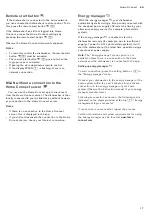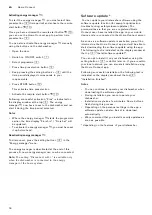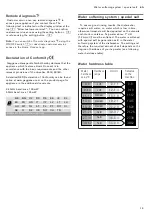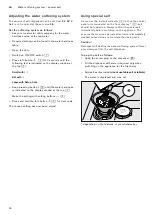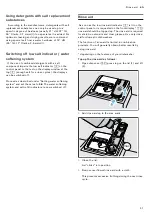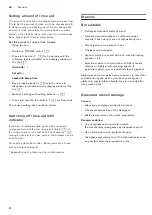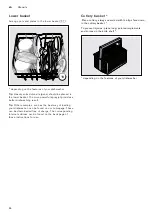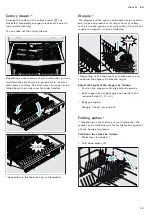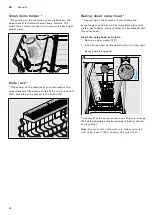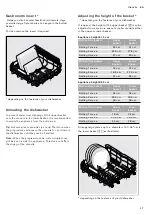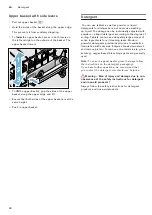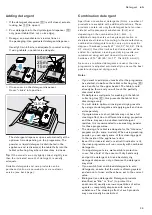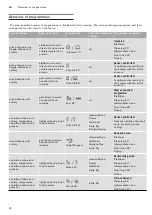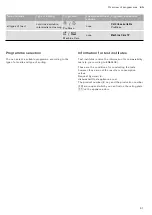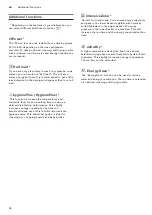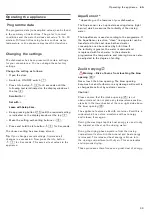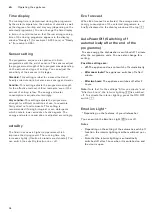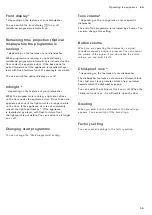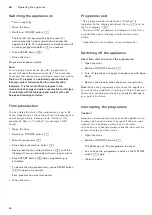
Rinse aid
en
21
Using detergents with salt replacement
substances
Detergents with salt replacement substances
According to the manufacturers, detergents with salt
replacement substances can only be used up to a
specific degree of hardness (usually 21° dH, 37° fH,
26° Clarke, 3.7 mmol/l) if no special salt is added. For
optimum cleaning and drying results, we recommend
using special salt from a water hardness of 14° dH
(25° fH, 17° Clarke, 2.5 mmol/l).
Switching off low salt indicator / water
softening system
Switching off water softening system
If the use of combined detergents with a salt
component impairs the low salt indicator
P
on the
control panel or the text on the display window at the
top
@
(enough salt for x rinse cycles), the displays
can be switched off.
Proceed as described under “Setting water softening
system” and set the value to
0-8
. The water softening
system and salt refill indicator are now switched off.
Rinse aid
Rinse aid
As soon as the low rinse-aid indicator
H
is lit on the
control panel or is requested on the front display *
):
,
rinse-aid should be topped up. The rinse aid is required
for stain-free utensils and clear glasses. Use only rinse
aid for domestic dishwashers.
The function of rinse-aid is limited in combination
products. You will generally obtain better results by
using rinse-aid.
* depending on the features of your dishwasher
Top up the rinse-aid as follows:
1.
Open dispenser
92
; press lug on the lid (1) and lift
(2).
2.
Add rinse-aid up to the max. mark.
3.
Close the lid.
Lid “clicks” into position.
4.
Remove overflowed rinse aid with a cloth.
This prevents excessive frothing during the next rinse
cycle.
PD[











